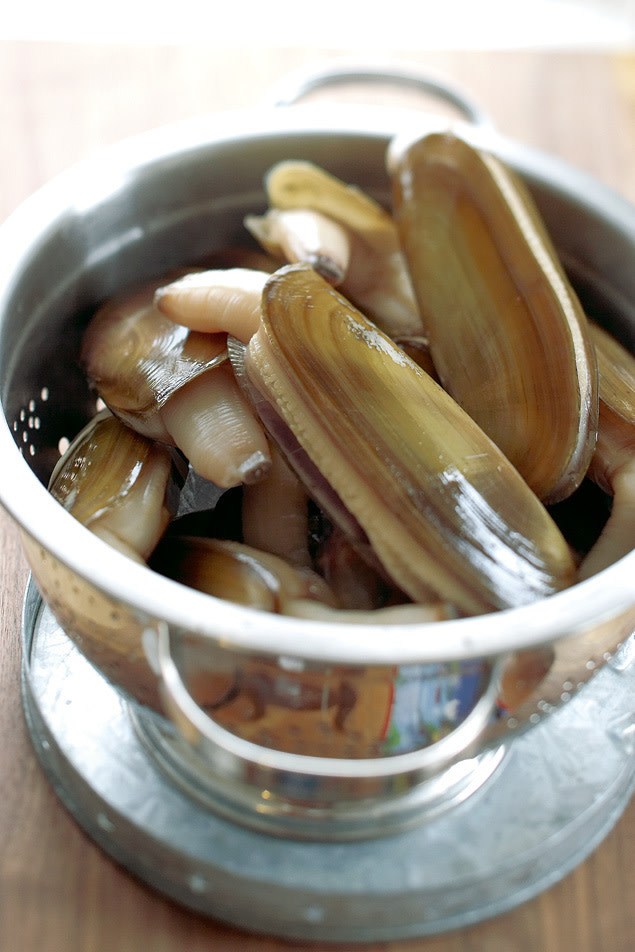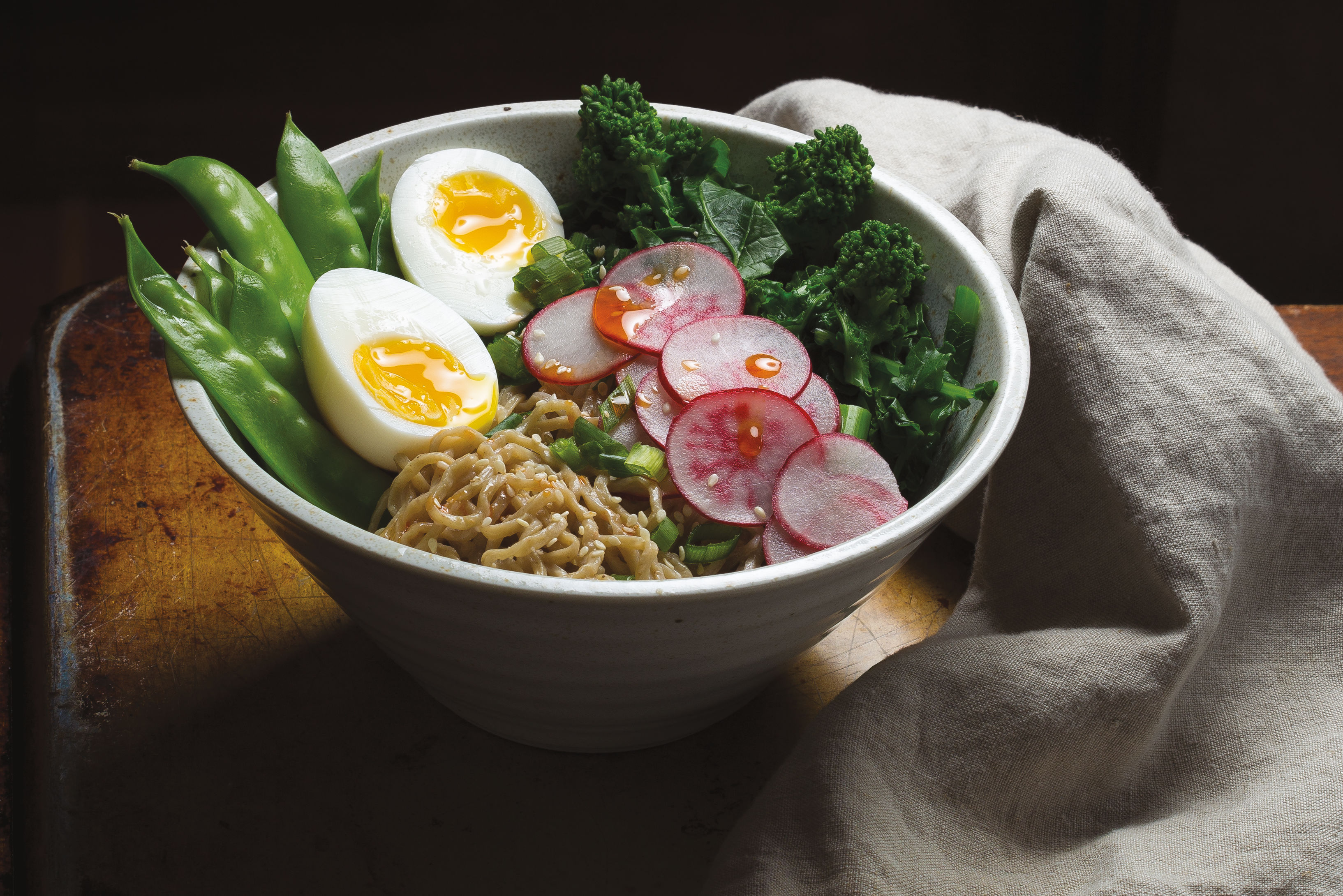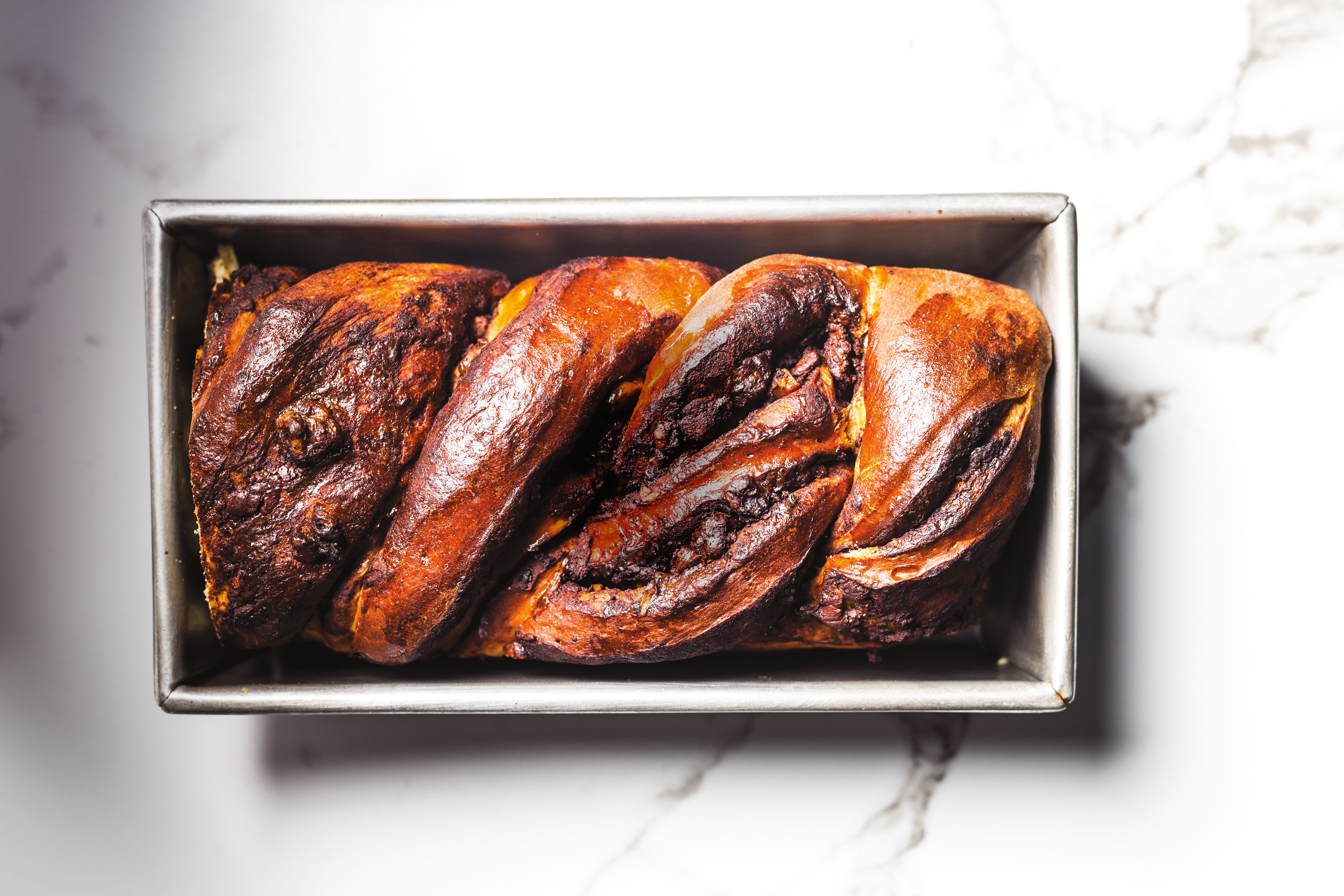Gold Diggers

Image: Lara Ferroni
A GOOD FRIEND of mine who grew up in Portland often recalls a family ritual: the point each winter when he and his six younger siblings pushed their parents to the brink of insanity. Since this cabin fever often coincided with the first (generally false) signs of spring, his folks usually loaded their kids into the camper; drove them to the coast; outfitted them in tall boots, rubber coats and wide-brimmed hats; and turned them loose at low tide to dig for razor clams. As my friend and his brothers combed the beach in search of the telltale dime-shaped dimple in the sand–indicating that a single, elusive razor clam was hiding below–his parents huddled together under an oversize umbrella, sipping wine and waving to their satisfied children.
A similar desire for spring catharsis might explain why James Beard so loved the salty sweetness of these Pacific Northwest jewels. The cookbook author and chef, who hailed from Portland, even paid them the ultimate compliment in his memoir Delights and Prejudices (Running Press, 2001): "I am certain that if the razor clam existed in France, the recipes for them would be classic."
Luckily for us, though, this particular bivalve’s home is right here in the Pacific Northwest. The species Siliqua patula–otherwise known as the northern razor clam for its elongated shape, which resembles that of a straight razor–inhabits Pacific shores from the Aleutian Islands to Pismo Beach on the central California coast, but the bulk of commercial and recreational harvesting occurs in Oregon and Washington. While the northeastern shore of the United States is home to its own version, called an Atlantic jackknife clam, that mollusk’s smaller size makes it inferior eating compared to the hefty Pacific razor clam–and size does correlate to flavor. A mature razor clam shell is typically three to five inches long, and within that oblong, honey-tinted armor rests a large oval of white, succulent, creamy meat whose size far outstrips smaller clams such as manilas or littlenecks.
In Oregon, the preferred method for cooking razor clams is simply to flour or batter them and then fry them in hot oil (quickly, or they’ll become too chewy). But Beard believed they tasted best in clam chowder, where the sharpness of herbs such as thyme and parsley accentuates the brininess and creaminess of the clams. And if you’ve dug the requisite clams up yourself from the salty, soggy beach, no matter what time of year, that bowl of warm, hearty chowder is going to taste even better.

Razor Clam Chowder
Recipe Courtesy Cory Schreiber
Cory Schreiber, founder of Wildwood restaurant, provided us with his take on James Beard’s Northwest razor clam chowder. Contact your local seafood purveyor for availability of razor clams, which are usually sold out of the shell.
Serves 4
INGREDIENTS
- 1 tbsp unsalted butter
- 1 leek, white part thinly sliced
- 1 medium fennel bulb, green parts discarded, white part diced
- 2 stalks celery, peeled and diced
- ¼ cup lukewarm water
- 2 tsp salt
- 4 cups clam juice
- 2 cups milk or heavy cream
- 2 cups Yukon Gold potatoes (about 3-4), peeled and diced
- 2 tsp fresh thyme leaves
- 2 tsp fennel seeds, coarsely crushed
- 1 bay leaf
- 6 razor clams, minced (about 2 cups)
- 1 tsp black pepper, freshly ground
- ¼ cup parsley leaves, stems discarded
- Melt butter in a large soup pot over medium-high heat.
- Add leek, fennel bulb and celery and sauté for 2 minutes.
- Add water and 1 tsp salt, then cover. Turn heat to medium-low and cook until vegetables are soft, about 8-10 minutes.
- Add clam juice, milk or cream, potatoes, remaining 1 tsp salt, thyme, fennel seeds and bay leaf.
- Simmer over medium heat, stirring occasionally, for 15 to 20 minutes, or until potatoes are tender.
- Add minced razor clams and pepper and simmer for 5 more minutes. Remove bay leaf. To serve, garnish individual bowls of chowder with whole parsley leaves if you like.




